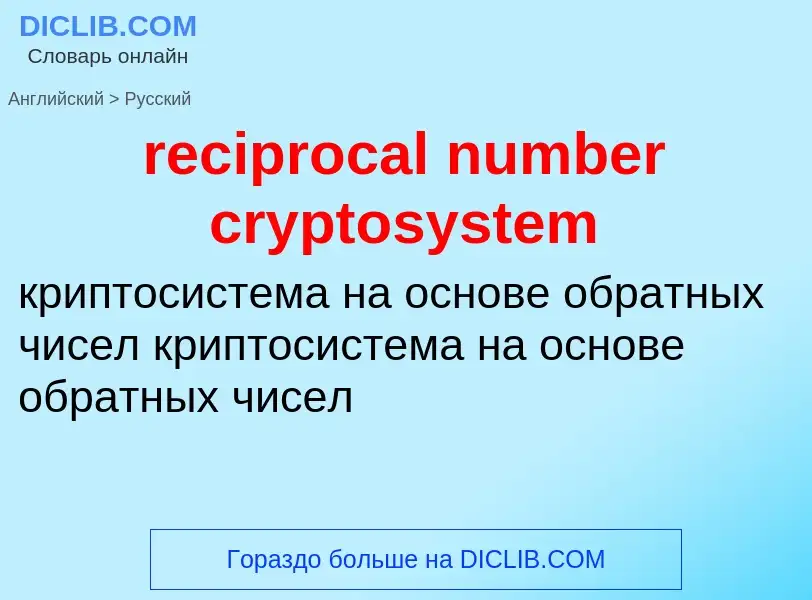Übersetzung und Analyse von Wörtern durch künstliche Intelligenz
Auf dieser Seite erhalten Sie eine detaillierte Analyse eines Wortes oder einer Phrase mithilfe der besten heute verfügbaren Technologie der künstlichen Intelligenz:
- wie das Wort verwendet wird
- Häufigkeit der Nutzung
- es wird häufiger in mündlicher oder schriftlicher Rede verwendet
- Wortübersetzungsoptionen
- Anwendungsbeispiele (mehrere Phrasen mit Übersetzung)
- Etymologie
reciprocal number cryptosystem - Übersetzung nach russisch
математика
двойственный базис
математика
обратная функция
Wikipedia
The Damgård–Jurik cryptosystem is a generalization of the Paillier cryptosystem. It uses computations modulo where is an RSA modulus and a (positive) natural number. Paillier's scheme is the special case with . The order (Euler's totient function) of can be divided by . Moreover, can be written as the direct product of . is cyclic and of order , while is isomorphic to . For encryption, the message is transformed into the corresponding coset of the factor group and the security of the scheme relies on the difficulty of distinguishing random elements in different cosets of . It is semantically secure if it is hard to decide if two given elements are in the same coset. Like Paillier, the security of Damgård–Jurik can be proven under the decisional composite residuosity assumption.

